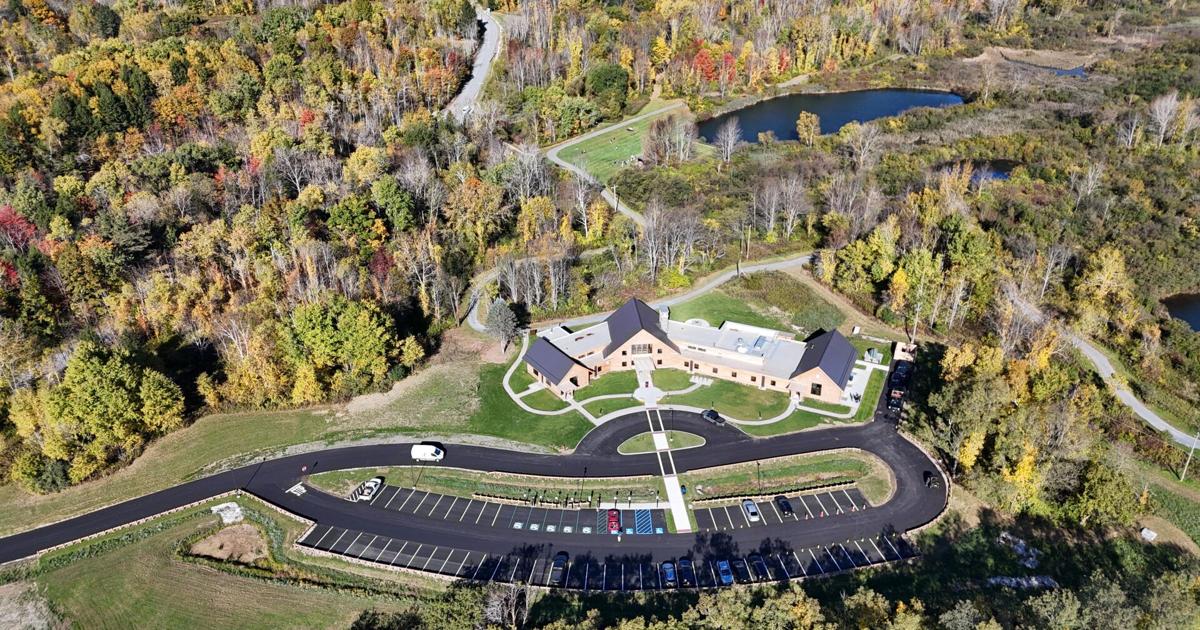By By Jane Kaufman,The Berkshire Eagle
Copyright berkshireeagle

ADAMS — The price the town will pay for solar energy to light, heat and cool the Greylock Glen Outdoor Center will drop from 25 cents per kilowatt hour to 15.68 cents per kilowatt hour for a period of 25 years.
In May, the Select Board signed a contract to pay 25 cents per kilowatt hour for solar energy from Solect Energy, the developer and owner of the solar array to be built at the Greylock Glen Outdoor Center. That represents a penny saved from National Grid’s price for electricity of 26 cents.
Now, the landscape has changed in both federal and state incentives, and last week, the Select Board signed an amendment to the contract reflecting the lower price.
The savings of nearly 10 cents per kilowatt hour is significant, far more than the nominal penny per kilowatt hour savings the town would have realized under the original contract. As time goes on and the price of electricity is expected to rise — as it has historically — the difference between what Adams pays for on-site solar energy and the price of electricity on the open market is expected to grow. That savings to Adams is expected to grow as electricity costs rise, helping the outdoor center meet its goal of becoming a net-zero facility.
Solect Energy plans to own and operate the solar array to deliver 169,000 kilowatt hours of electricity per year to the center and to the grid. The project also envisions five charging stations for cars at the parking lot.
The outdoor center was initially designed as a net-zero building by Maclay Architects. To power the building, the architects envisioned putting a solar array over the parking lot.
About half the panels for the 148-kilowatt array will go over 18 cars on the outer edge of the parking lot; the other half will hang over drainage swales and a grassy area just beyond the guardrail. There will also be five stations for car charging.
WHY THE PRICE WILL CHANGE
Several variables come to play in the request by Solect Energy for the amendment to the price it will charge Adams for electricity.
Based on the loss of jobs related to the fossil fuel energy sector released in June by the U.S. Census Bureau, Berkshire County became eligible for the federal Energy Community Tax Credit Bonus.
That’s a 10 percent bonus on the solar Federal Investment Tax Credit. While the original tax credit on the $700,000 investment was 30 percent, it’s now eligible for a total tax credit of 40 percent.
In addition, the state Department of Energy Resources has recently shifted its incentives for solar development under the Solar Massachusetts Renewable Target. The incentive will require National Grid to pay the developer more in exchange for renewable energy credits or carbon offsets.
Solect Energy had initially applied for an incentive under SMART 2.0 of 11.265 cents per kilowatt hour. Now, it plans to withdraw its application and apply for the more attractive incentive under SMART 3.0, which opens Oct. 15. The SMART 3.0 incentive of 20.372 cents per kilowatt hour is more than 9 cents higher than the previous incentive, Andreas Schmid, vice president of business development for Solect Energy, told The Eagle.
The timing of this project allows it to take advantage of these incentives — under both state and federal guidelines.
Critically, the Federal Investment Tax Credit expires for all projects that haven’t started construction by July 4, 2026. That’s a direct effect of One Big Beautiful Bill Act, Schmid said.
The Adams building inspector approved Solect Energy’s design on Aug. 25.
“In order for steel to be manufactured, we had to have the building permit,” Schmid said.
On the ground, construction is actually slated to start in February and finish by June 2026.
Solect Energy can’t get to this project any earlier because it has commitments to finish other projects in its portfolio by the end of this year, Schmid said.
PASSING ALONG THE SAVINGS
Solect Energy is passing along the savings to the town following negotiation and with the blessing of PowerOptions, a nonprofit started and spun off from the state. It operates a buying consortium for more than 500 communities and nonprofits in Connecticut, Massachusetts and Rhode Island. It also provides expertise and oversight for contracts related to renewable energy.
As a member of PowerOptions, Adams relied on it to procure a developer for this project. As part of its review, PowerOptions approved the initial power purchase agreement and the original price for solar energy.
As the incentives changed, Solect Energy presented its updated numbers for PowerOptions to review.
Solect Energy and another solar developer, Sunwealth, “get to serve our solar program, use the PowerOptions name, but they have to win the RFP, and they have to negotiate terms with us that we feel are advantageous and adequately protective of our members,” said Walter Gray, program director of alternative fuels at PowerOptions.
Gray said PowerOptions required Solect Energy to pass along the savings it received under the better incentives.
“Under the rules of our program, if Solect kept the [power purchase agreement] rate the same, they would be in violation of our program rules,” Gray said, adding, “They would be making return on the project that would exceed their allowed cap.”
Schmid had no objection to passing along the savings, he said.
“It’s just awesome to be part a part of the Greylock Glen Outdoor Center project, and to be able to provide a solar energy project that helps achieve the goal of being net zero for that facility,” he said. “So it’s good stuff.”



